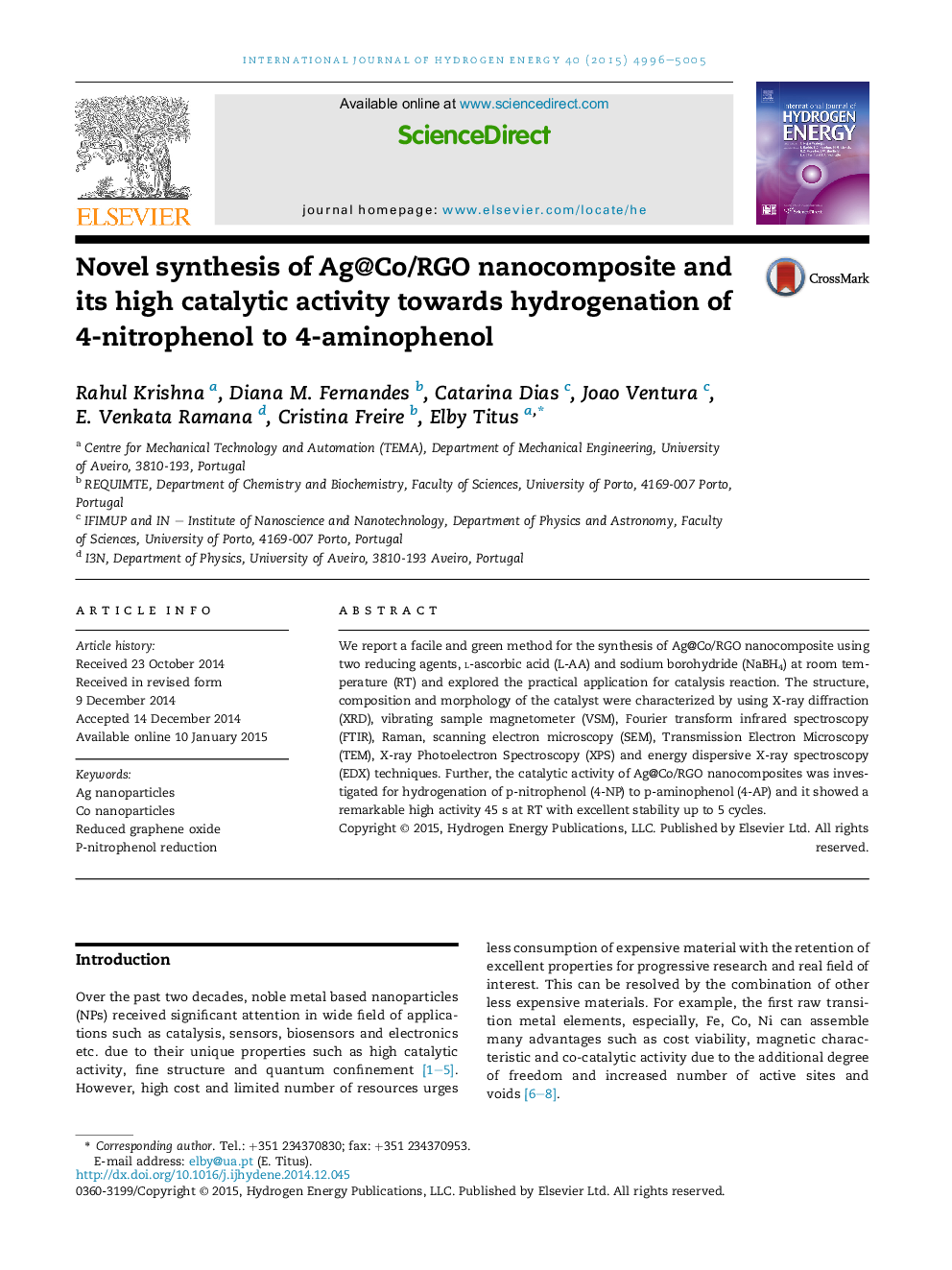| Article ID | Journal | Published Year | Pages | File Type |
|---|---|---|---|---|
| 1271612 | International Journal of Hydrogen Energy | 2015 | 10 Pages |
•A novel method was developed to synthesize the Ag@Co/RGO nanocomposite.•Remarkable high catalytic activity of Ag@Co/RGO nanocomposite was observed for 4-nitrophenol reduction.•The catalytic activity was noticeably higher than Ag/RGO and Co/RGO.
We report a facile and green method for the synthesis of Ag@Co/RGO nanocomposite using two reducing agents, l-ascorbic acid (L-AA) and sodium borohydride (NaBH4) at room temperature (RT) and explored the practical application for catalysis reaction. The structure, composition and morphology of the catalyst were characterized by using X-ray diffraction (XRD), vibrating sample magnetometer (VSM), Fourier transform infrared spectroscopy (FTIR), Raman, scanning electron microscopy (SEM), Transmission Electron Microscopy (TEM), X-ray Photoelectron Spectroscopy (XPS) and energy dispersive X-ray spectroscopy (EDX) techniques. Further, the catalytic activity of Ag@Co/RGO nanocomposites was investigated for hydrogenation of p-nitrophenol (4-NP) to p-aminophenol (4-AP) and it showed a remarkable high activity 45 s at RT with excellent stability up to 5 cycles.
Graphical abstractWe report a facile and green method for the synthesis of Ag@Co/RGO nanocomposite using two reducing agents, l-ascorbic acid (L-AA) and sodium borohydride (NaBH4) at room temperature and explored the practical application for catalysis reaction. The catalytic activity of Ag@Co/RGO nanocomposites was investigated for hydrogenation of p-nitrophenol (4-NP) to p-aminophenol (4-AP) and it showed a remarkable high activity 45 s at RT with excellent stability up to 5 cycles.Figure optionsDownload full-size imageDownload as PowerPoint slide
